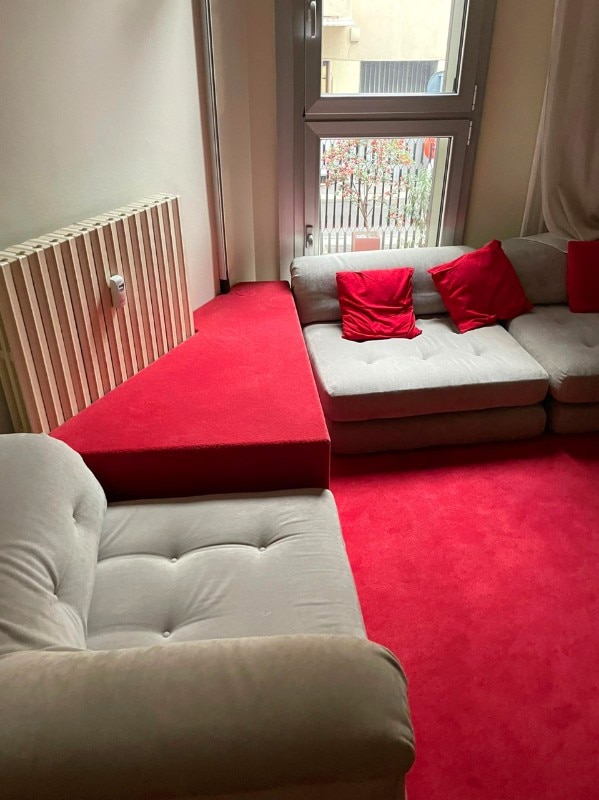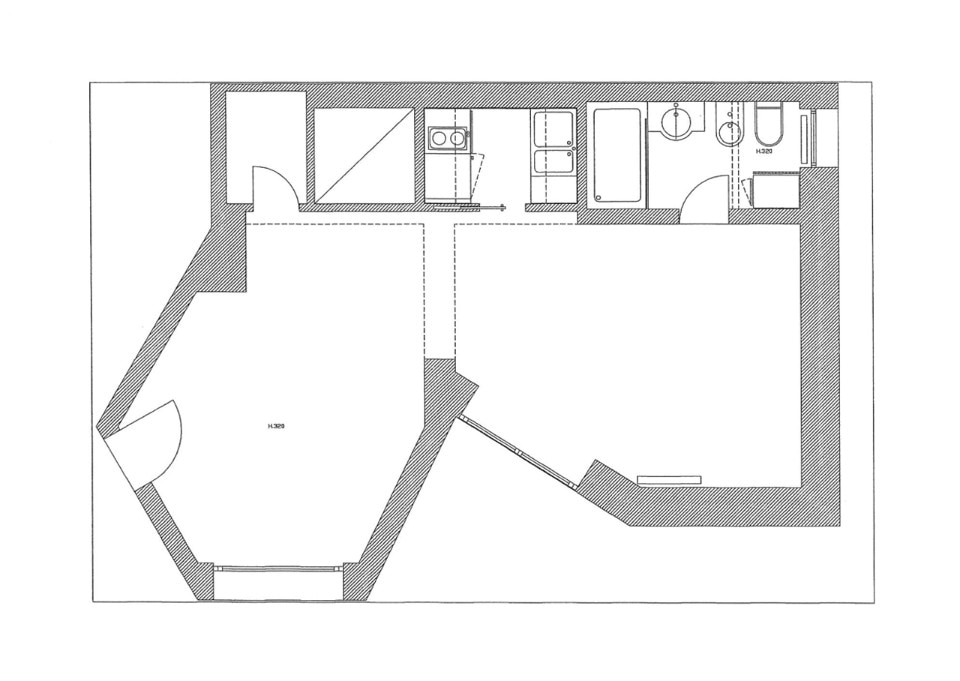It is not unusual in Milan to come across certain buildings working that specific magic, to create capsules of Modern within the historic, medieval, Spanish and then Enlightened city. Sometimes this phenomenon is brought to even higher levels of intensity, as it happens with this residential building that sets different rules of time and pace right in the middle of the Brera district
A spirit of transition can be perceived, involving everyone and everything, structures, spaces and people, even the small two-room rented apartment on the first floor, a living area and a bedroom, separated until now by the system of furnishings that had accompanied its recent life: open shelving in dark wood and red panels, low sofas gathered around stepped floor elevations, all unified by the carpet, which is also red. In the bedroom, above the bed, a bridge wardrobe to create an alcove.
Its latest transformation though has sought light in every way; not the effect of masses, not the effect of colour blocking, just light. Delicate tones of color on the walls and in the new oak parquet flooring, and the element separating the living and sleeping areas that becomes the core of the design strategy: a metal-framed glass wall made up of two full-height sliding panels, bringing the light from the bedroom’s high window also to the living room.
The articulation of the two rooms is flanked by a longitudinal slab of service spaces, which aligns a walk-in wardrobe, a minimal and functional kitchen, and the bathroom that opens almost as a surprise onto the sleeping area, revealing the large, figurative foliage of a wallpaper. The bridge wardrobe framing the bed has become part of the wall surface through a paneleing intervention, making the sleeping space uniform in front of the light.
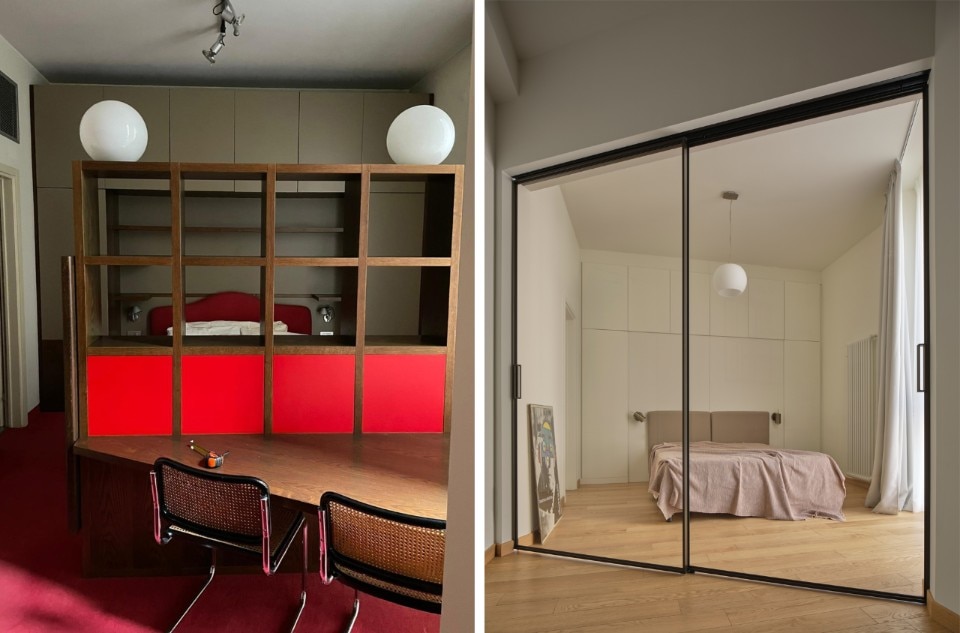
The building was realized in the 60s by Luciano Canella – brother of architect Guido and celebrated academic – part of that 'professionismo colto’ design environment (‘cultured professionalism’, as it was recently defined by Italian scholars), which shaped the image of post-war Milan. Right from the start, it was a place for otherness within the neighborhood, with its lobed plan expanding the street into a courtyard, marked by the clear structural grid and the texture of colored bricks on the façade; it has a spire-shaped metal sculpture in the middle, and a sculptural staircase spiralling up around a railing giving a strong graphic sign; the elaborate forms of its masses give each space a distinctive set of cuts and angles, and that sense of continuous variation involving even the smallest living unit. Right from the start as well, the building has been the home to a multiplicity of stories of movement, of continuous transition: the story of Number One, Milan's first discotheque, which opened in 1968 in the basement; the story of its creator Gigi Rizzi, a famous playboy who in that same year is said to have elected the top floor, with its transparent ceiling, as the transitional theatre of a transitional (and legendary) dating story involving him and Brigitte Bardot.
An important story for Domus is also linked to this building: one of the modern flats gathered around the dynamic and unexpected urban courtyard on the street was inhabited by Gianni Mazzocchi, the founder of Editoriale Domus.
Thanks to Society Limonta for the fabrics.

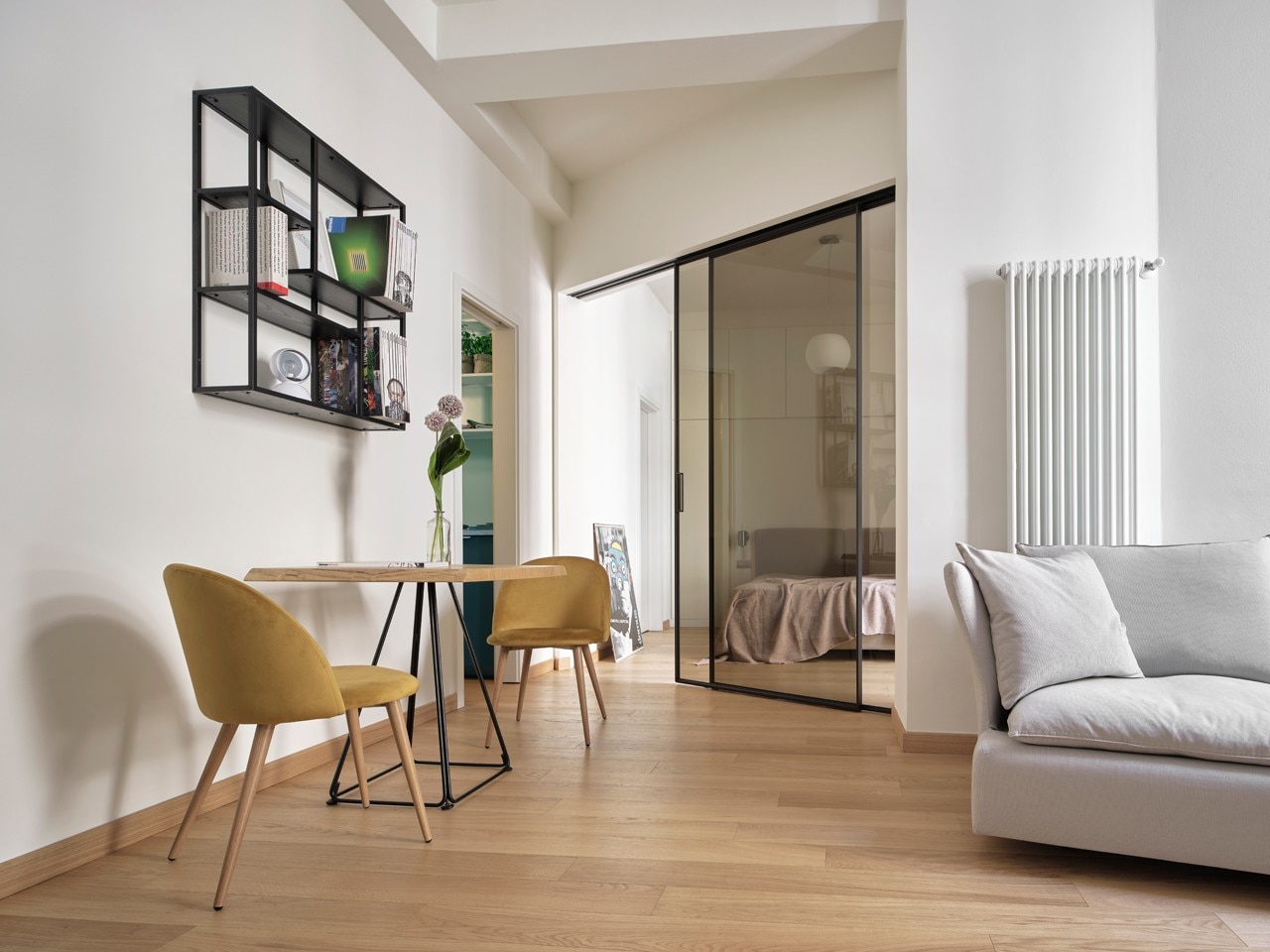

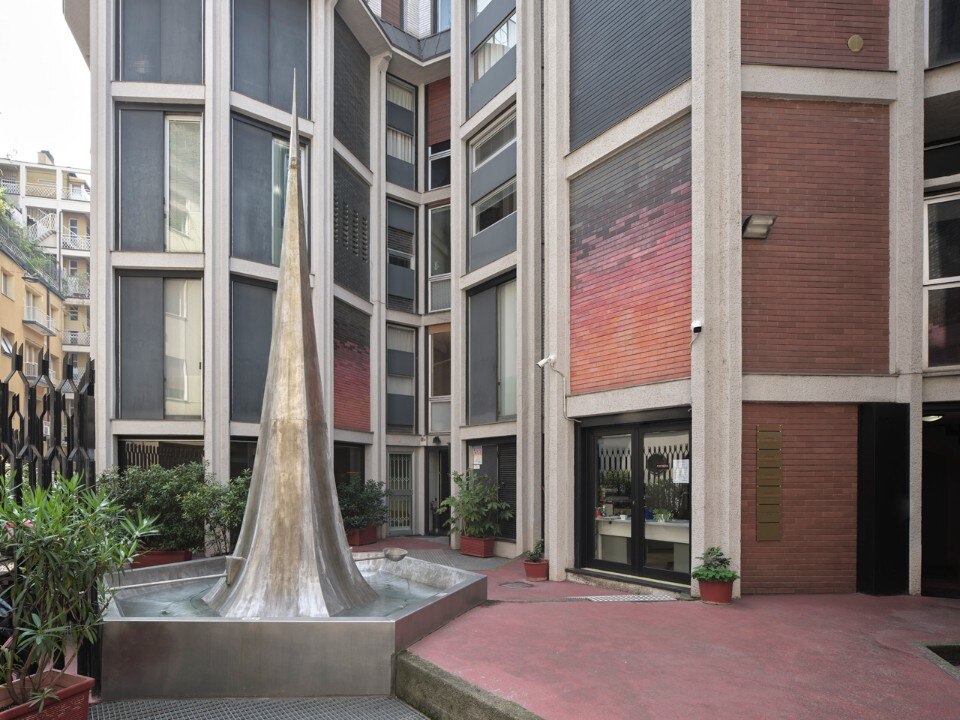
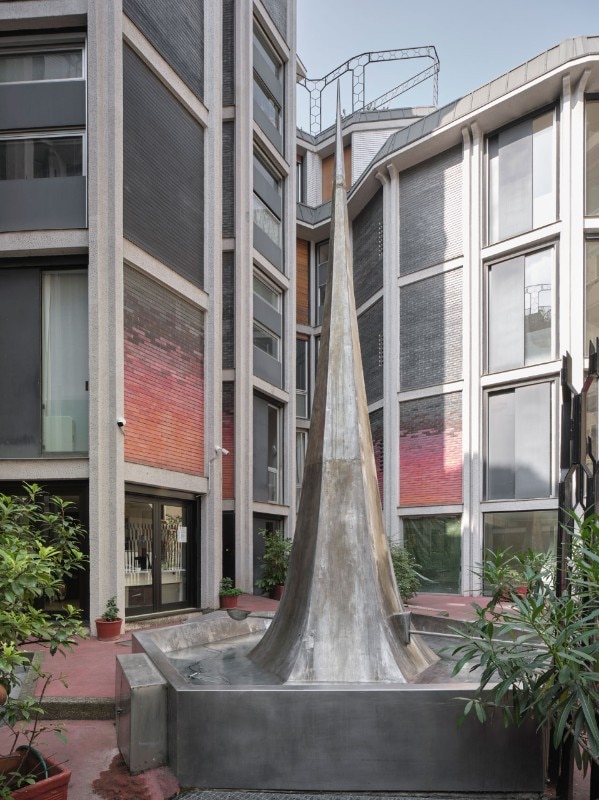
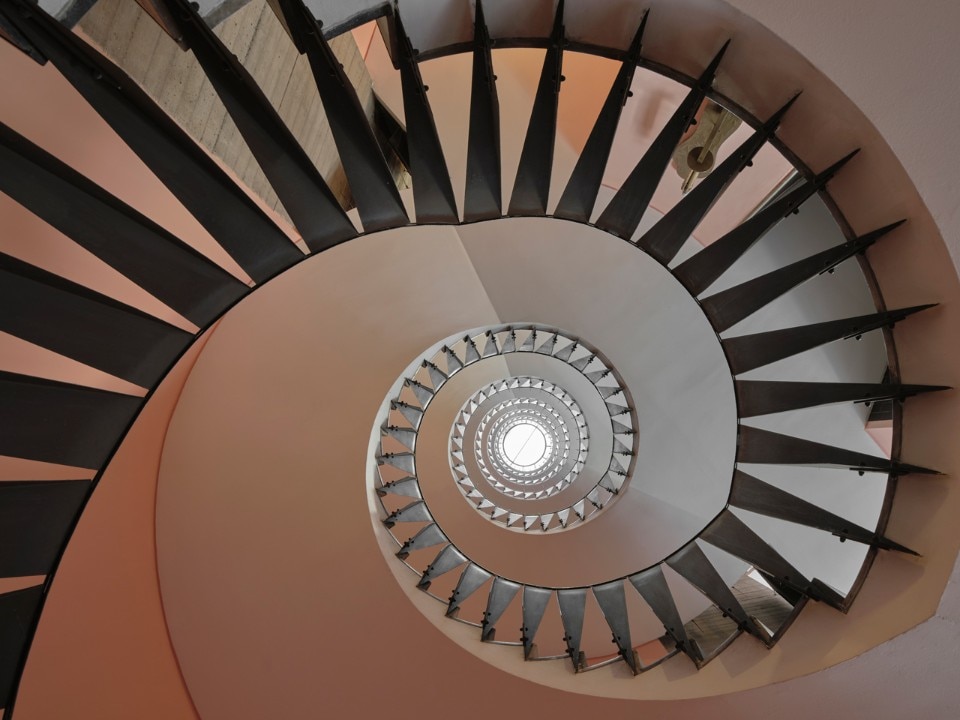
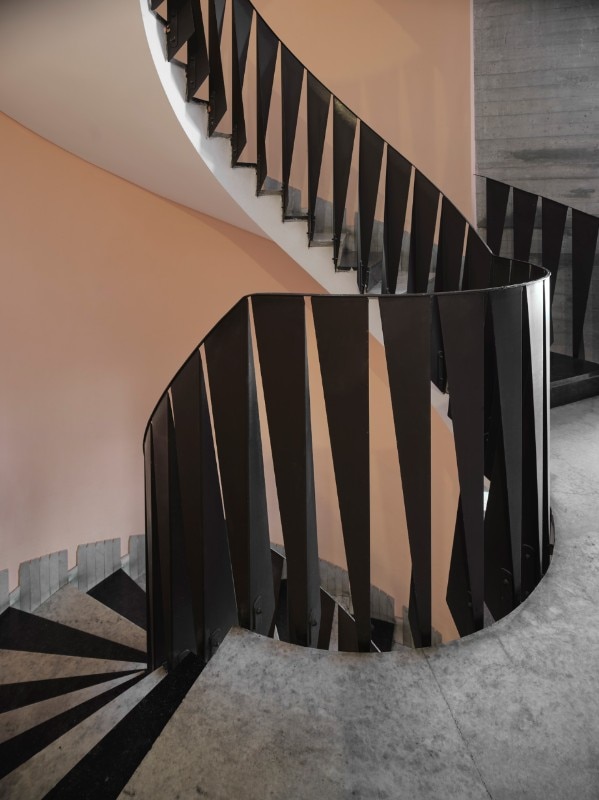
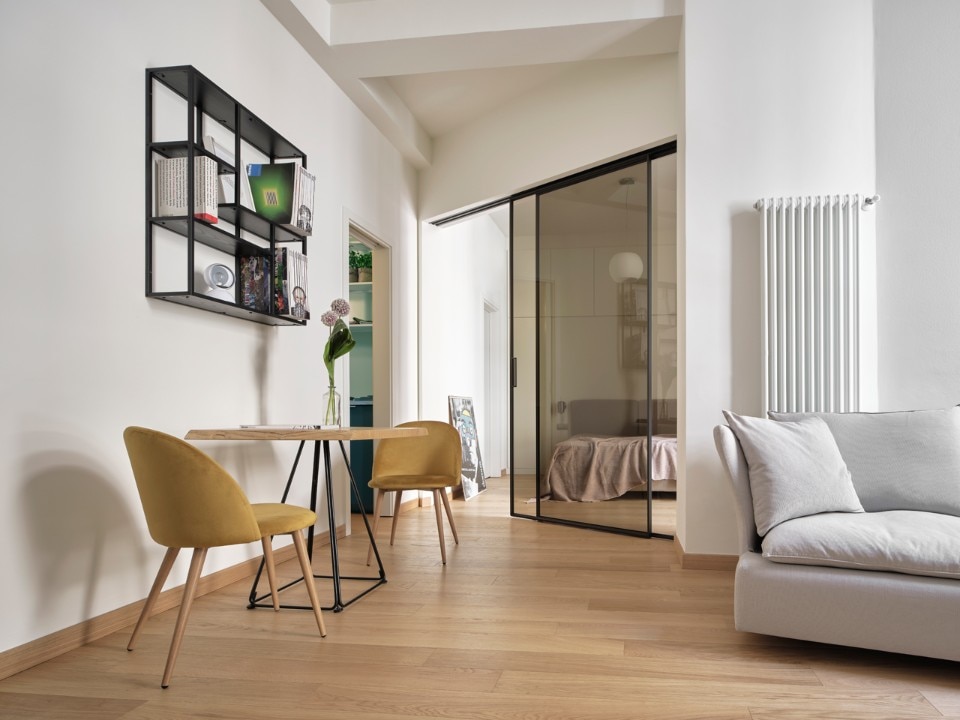
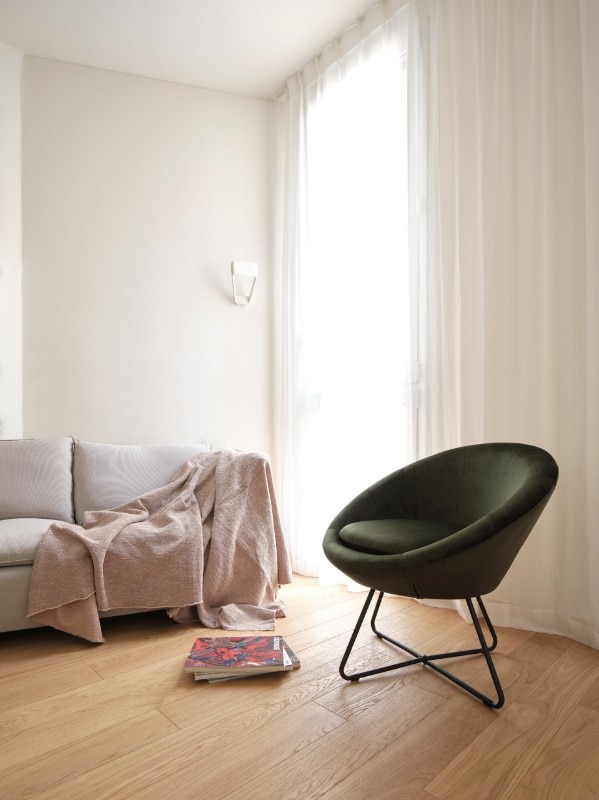
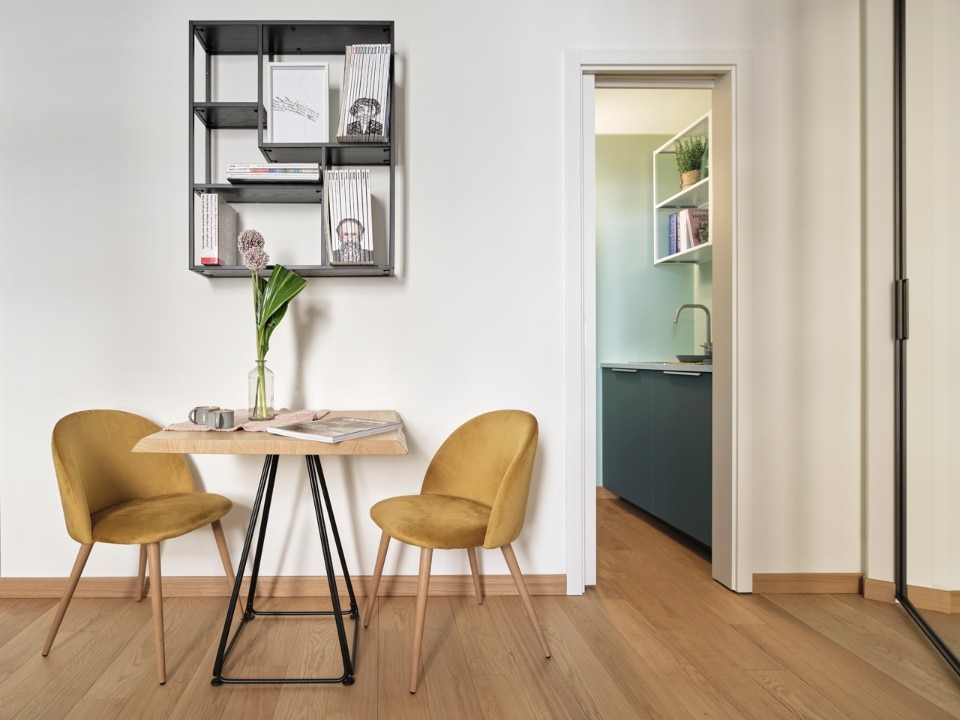
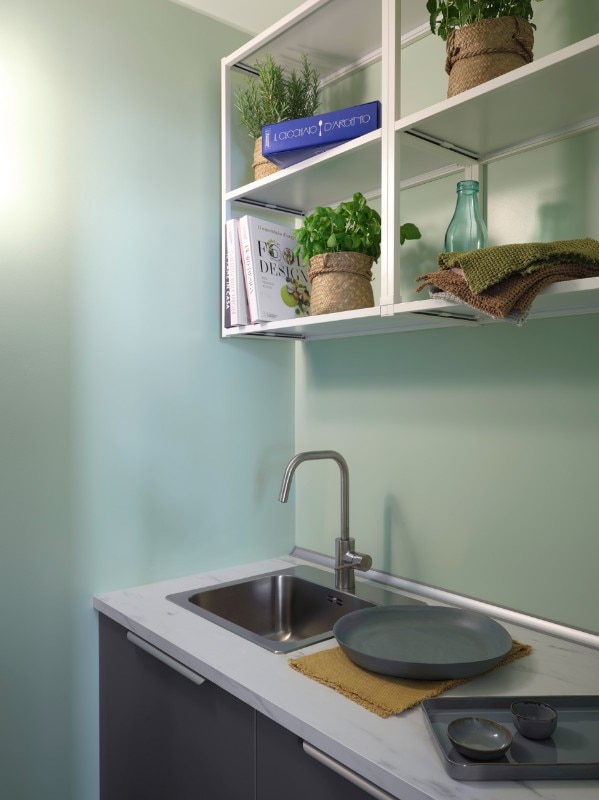
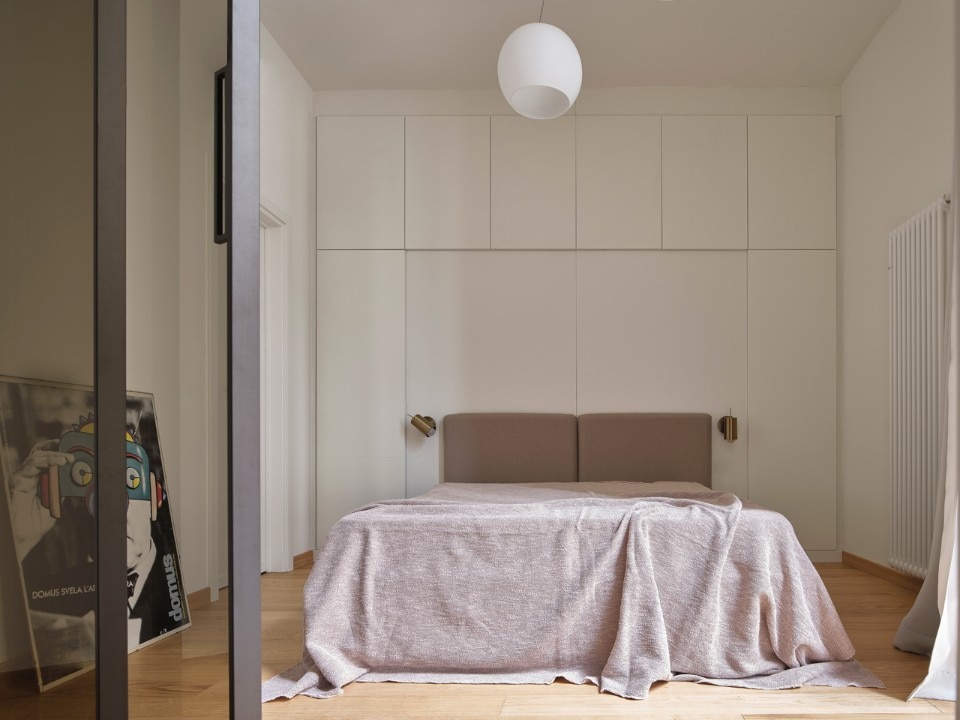

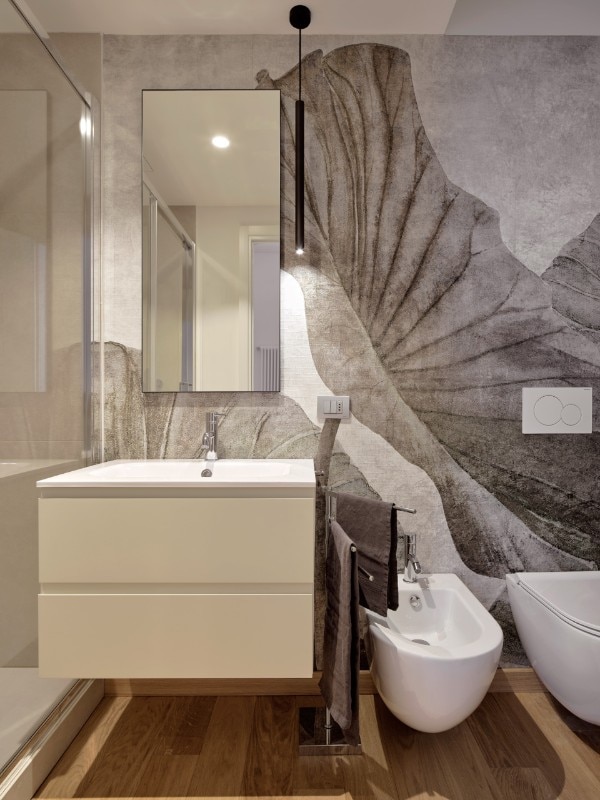
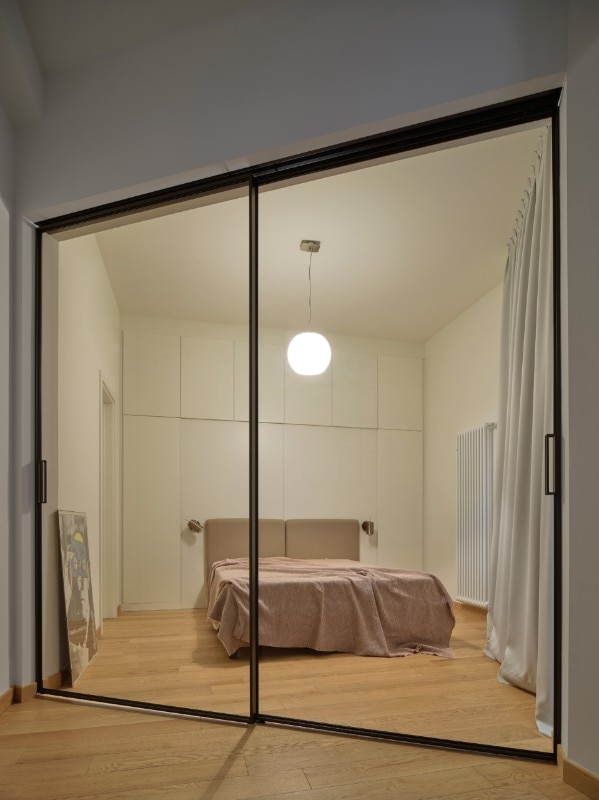
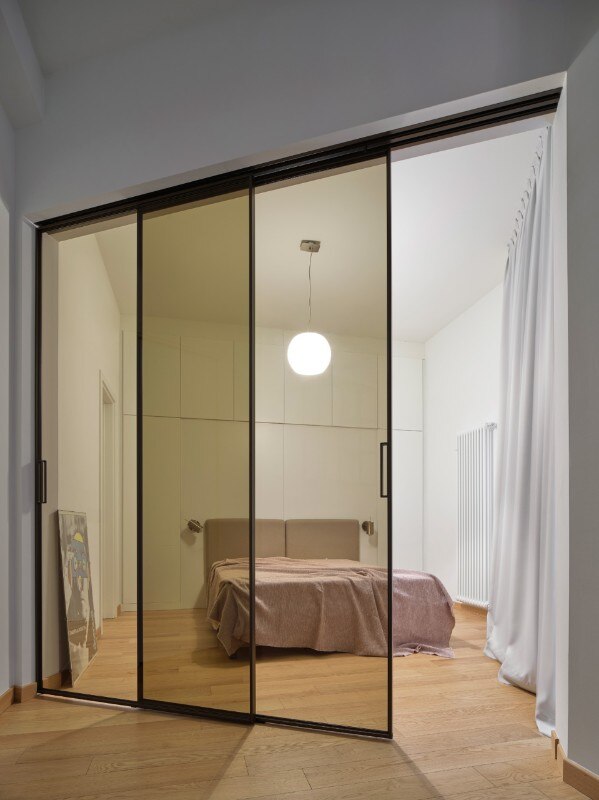
.jpg.foto.rmedium.png)

